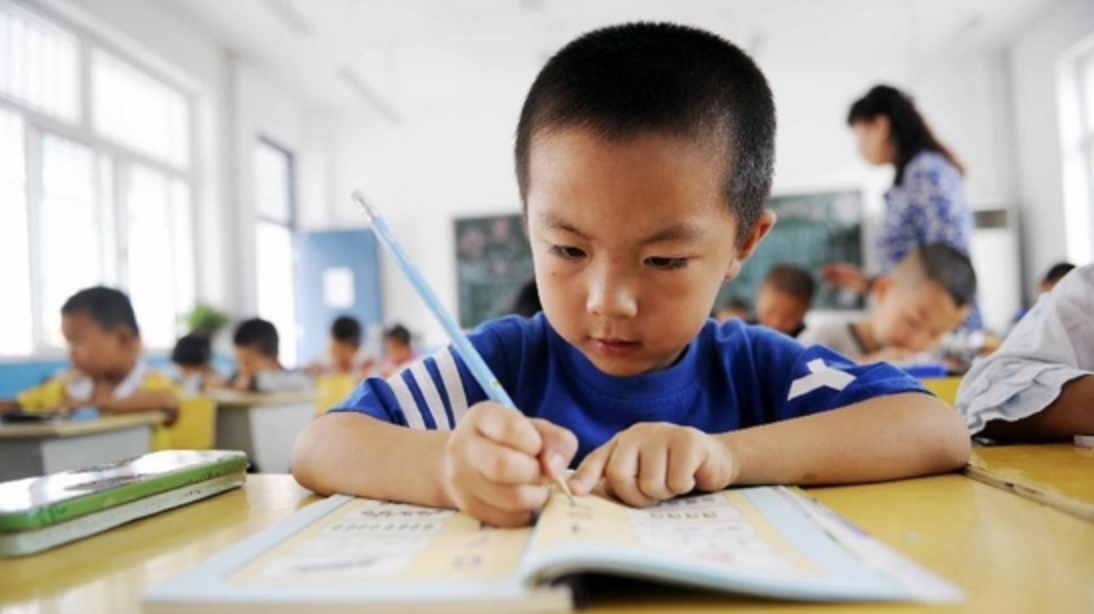China uses methods of teaching that would be scandalous in the U. S. Only thing is, they work.
In a Wall Street Journal article, Lenora Chu explained what happened when she sent her child to school in Shanghai, China.
As an American living in China, Chu decided to send her son to a local public school in Shanghai, a city widely renowned for the quality of its graduates.
Chu found out quickly that things aren’t done in Chinese schools the way they’re done here.
In her son’s first week of Kindergarten, the teacher (Teacher Chen) made her son eat an egg by forcing it into his mouth. This was done, as her son later told her, five times. He spat it out the first four times, but the fifth time he obediently swallowed. Obedience was apparently the lesson he was expected to learn.
Upon hearing about this, Chu marched into the school and confronted the teacher, at which point the following discussion ensued:
“We don’t use such methods of force in America,” I blurted in Mandarin, my son clutching my hand. (I was born and raised in America but grew up speaking Chinese at home.)
“Oh? How do you do it?” Teacher Chen challenged.
“We explain that egg eating is good for them, that the nutrients help build strong bones and teeth and helps with eyesight,” I said, trying to sound authoritative. “We motivate them to choose…we trust them with the decision.”
“Does it work?” Teacher Chen challenged.
In truth [said Chu], no. I’d never been able to get my son to eat eggs. He’s a picky eater. Later, Teacher Chen pulled me aside for a lecture. “In front of the children, you should say, ‘Teacher is right, and Mom will do things the same way,’ OK?”
You can just imagine the outrage among many American educators upon hearing of such cruelty.
American education is distinguished for (in addition to poor academic performance) its permissivism. Teachers are told, in one popular admonition, not to be the “sage on the stage,” but the “guide on the side.” “Learning centers” have become prominent features, since they allow the child to choose what he or she would like to do. The engage in “discovery learning,” in which the child “discovers” new knowledge, rather than accepts anything on mere authority.
In China, rather than “discovery learning,” children are taught that “teacher knows best.” Learning is not “child-centered” in China, but everyone moves at the same pace. Unlike many American schools, in which every child is supposed to meet “child-centered,” individualized expectations, Chinese students must all meet the same standards and everyone moves at the same pace.
One of the few things Chu didn’t like was the communist political indoctrination. But, hey, check out the political ideology that reins in many American classrooms.
The results of China’s educational methods? “… Chinese children trounce their American peers in early math skills, including geometry and logic,” and Shanghai teens embarrassed American students in an international comparison of problem solving skills.
Oh, and in China teachers have a social status equivalent to that of doctors.
















3 Comments
Mark Diehl
September 15, 2022, 12:43 pmYes, all in China have the same skills and are good at those skills. No one in China can invent anything, not even Covid 19. They can carry it all over the world, but they needed an American to create. China and the entire world wait for the next big thing. Most look to America for that, because we inspire individuals to dream and become good at something. The next big thing will likely come from America and the people from China we assembled it. And other factories in China will make cheap counterfeits.
REPLYRyan
September 15, 2022, 7:13 pmYes, methods like that might "work" at teaching obedience, but how was that related to any educational goal? Shanghai’s districts might perform well compared against the US, but they perform worse on international tests of educational achievement than Korea (whose education system is authoritative but not authoritarian like this) and far below Finland (which is further on the other end of the spectrum than the US is by many measures). This piece cherry picks a few claims, without citation, based on a single anecdote, interprets them very narrowly without critique, and then passes it off as knowledge. Instead, we might want to ask other questions like what the costs of teaching "obedience" over independent decision-making are, and whether that’s the type of society we would want to cultivate. For a site calling itself "intellectual takeout," I expected much better.
REPLYC
September 16, 2022, 8:12 amThen how do Chinese teachers respond to ADHD, or is that a western phenomenon?
REPLY